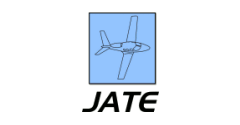Abstract
Virtual Reality (VR) technology is a quickly advancing field that has many documented benefits, including highly detailed environments, accuracy to the real world, and low cost of entry in the flight simulation market. At the time of this study, VR technology has not been well tested or widely accepted in the aviation industry. In this mixed methods study, quantitative and qualitative data was collected on beginning-level instrument pilots (n = 120) while performing a visual traffic pattern at an airport. A one-way ANOVA was used to evaluate the equivalence of each group in the study based on previous flight and VR experience. Then, a one-way ANOVA was conducted on pre-test/post-test gain scores to compare each training group, as well as a post hoc Tukey HSD to conduct multiple comparisons and evaluate mean differences between the groups. The results show that participants who train in a VR simulator perform similarly to students who conduct training in a PC-based simulator. Both training groups performed significantly better than the control group, which conducted no training between the pre-test and post-test. Finally, survey data was evaluated to find that students who trained in VR simulators believed they performed better on the post-test than the pre-test and most felt that VR simulators could be an acceptable training technology for use in the flight training curriculum. These results will help inform flight training organizations who are considering new technology that provides a low-cost and high-value alternative to costlier, fixed-based simulators.
Recommended Citation
Guthridge, Ryan and Clinton-Lisell, Virginia
(2023)
"Evaluating the Efficacy of Virtual Reality (VR) Training Devices for Pilot Training,"
Journal of Aviation Technology and Engineering:
Vol. 12:
Iss.
2, Article 1.
Available at: https://doi.org/10.7771/2159-6670.1286
Included in
Adult and Continuing Education Commons, Educational Methods Commons, Education Economics Commons, Management and Operations Commons


